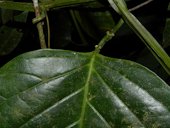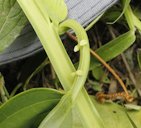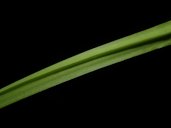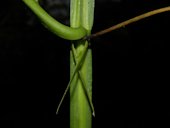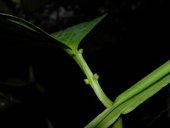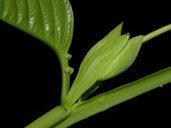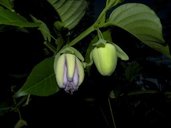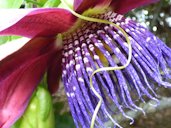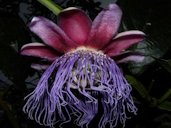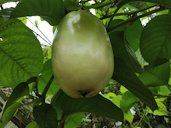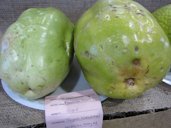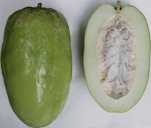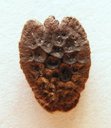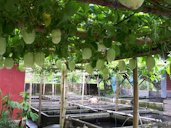| Giant Granadilla - Passiflora quadrangularis | |||||||||||||||||||||||||||||||||||||||||||
|---|---|---|---|---|---|---|---|---|---|---|---|---|---|---|---|---|---|---|---|---|---|---|---|---|---|---|---|---|---|---|---|---|---|---|---|---|---|---|---|---|---|---|---|
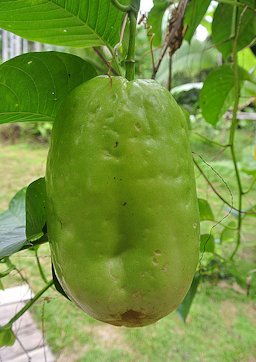 Fig. 1 The giant granadilla or badea. Largest of the passion fruits. A neotropical species, more widely planted for its scented flowers, edible fruit (mainly juices) and medicinal roots. 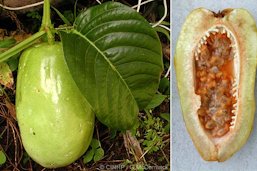 Fig. 2  P. quadrangularis, leaves and fruit whole and sectioned 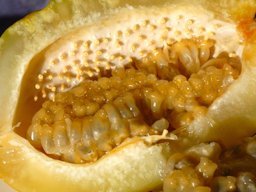 Fig. 3  These seed sacs hold all the barbadine-y flavour 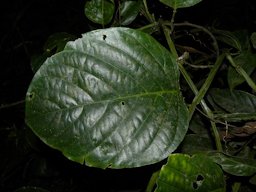 Fig. 4  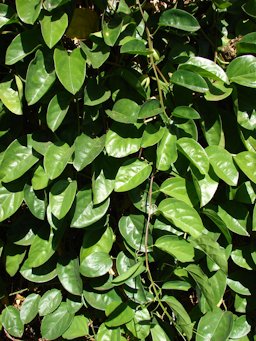 Fig. 5  P. quadrangularis (giant granadilla), leaves, Enchanting Floral Gardens of Kula, Maui, Hawai'i 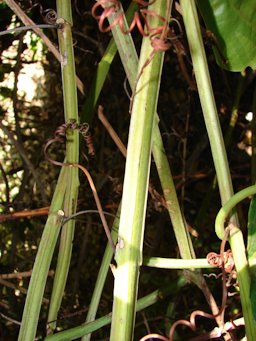 Fig. 9  P. quadrangularis (giant granadilla) stems  Fig. 13  Vine showing the tendrils 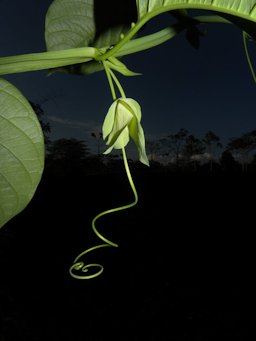 Fig. 14  Note the 3 pairs of glands along the margin of the petiole 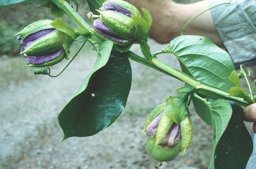 Fig. 15  Flowering and fruiting vine  Fig. 16 P. quadrangularis flower bud 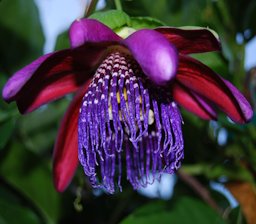 Fig. 17  Giant granadilla, P. quadrangularis 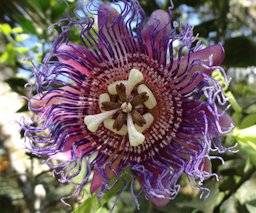 Fig. 18  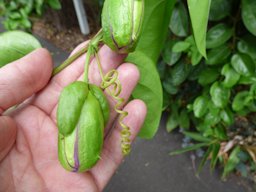 Fig. 25  P. quadrangularis (giant granadilla) 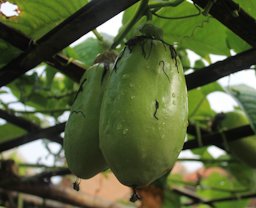 Fig. 26  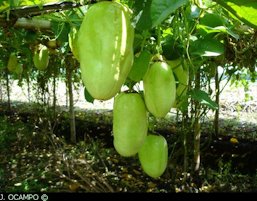 Fig. 27  P. quadrangularis fruiting habit Fig. 35  Flowering and fruiting habit  Fig. 36  Barbadine punch with a few seeds in their flavour sacs on top 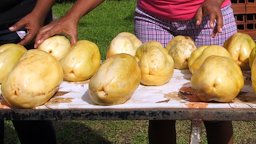 Fig. 37  Barbadine is a tropical fruit that is made into a sweetened drink. Recently is has acquired a reputation as a most desired flavour for ice creams. 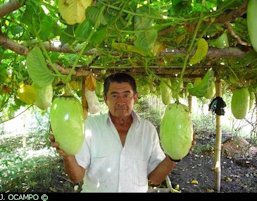 Fig. 38  Fig. 39  Museo di storia naturale (Florence), botany section, wax models Fig. 40  Close-up |
Scientific
name Passiflora quadrangularis L. Pronunciation pass-iff-FLOR-uh kwad-ran-gew-LAIR-iss 14 Common names English: baden, barbadine, giant granadilla, giant grenadilla, granadille true, granadilla, grenedilla, grenadine, square stalked passion flower, square- stem passion flower; French: grenadine, barbadine, grenadille géante, passiflore quadrangulaire; German: Königs-Grenadille, Riesen-Grenadille, Granadilla, Granadillas, Meloneng-Granadille, Riesen-Königsgranadille; Portuguese (Brazil): maracujá-açu, maracujá-assú, maracujá de caiena, maracujá-grande, maracujá-suspiro, maracuja silvestre, maracujá-mamão, maracujá-melão, maracujá-uaçu; Spanish: badea, badera, corvejo, granadilla de fresco, granadilla grande, granadilla para refrescos, granadilla real, parcha de guinea, parcha granadilla, parcha granadina, pasionaria, quijón, sandía de la pasión; Swedish: barbadin 1,2 Other Common Names Synonyms Granadilla quadrangularis (L.), P. macrocarpa Mast., P. macroceps Mast., P. quadrangularis var. sulcata (Jacq.) DC., P. sulcata Jacq., P. tetragona M. Roem 10 Relatives Passionfruit (P. edilis); yellow passionfruit (P. edulis flavicarpa); fragrant granadilla (P. alata); red granadilla (P. coccinea); maypop (P. incarnata); sweet granadilla (P. ligularis); sweet calabash (P. maliformis); banana passionfruit (P. mollissima); water lemon (P. laurifolia) 18 Family Passifloraceae (passion-flower family) Origin South America USDA hardiness zones 10-11 14 Uses Food; landscape screen Height 33-49 ft (10-15 m) or even 148 ft (45 m) 5 Plant habit Perennial herbaceous vine; vigorous climbers 5,20 Growth rate Fast Longevity Short lived, plants usually needing replacement after having fruited for about six years 16 Pruning requirement Severely cut back in spring to encourage new growth; must be pruned and kept in bounds 3 Leaves Alternate; thin, with conspicuous veins sunken on the upper surface, prominent beneath 5 Flowers Pendulous; showy; solitary; fragrant flowers; up to 4-4.8 in. (10-12 cm) wide; bell-shaped calyx Fruit Berry; aromatic; melon-like; delicate skin; greenish-white/pale- or-deep-yellow; firm, mealy white flesh 5 Season Flower and fruits all year Light requirement It thrives in full sunlight 5 Photoperiodism: It is not sensitive to daylength 5 Soil tolerances Tolerates a wide range of soil types, but highly susceptible to poor drainage and waterlogging 4 pH preference 5.5-6.8 4 Aerosol salt tolerance Will not withstand salinity 5 Soil salt tolerance Will not withstand salinity 5 Cold tolerance Harm 30 °F (-1.1); kill 28 °F (-2.2 °C) 7 Plant spacing In commercial plantings in Indonesia, the vines are set 6.5-10 ft (2-3 m) apart each way 6 Roots The stems are arising from a fleshy, tuberous root that becomes enlarged with age 5 Invasive potential * Central, North, South: High invasion risk; predicted to be invasive and not recommended by IFAS Pest resistance Nematodes and fruit flies Known hazard The leaves, skin and immature seeds contain a cyanogenic glycoside. The pulp contains passiflorine, and if indulged in excessively, causes lethargy and somnolence. The raw root is said to be emetic, narcotic and poisonous. 6 Reading Material Passiflora quadrangularis, PROSEA Foundation Granadilla, Fruits of Warm Climates The Giant Granadilla, Manual Of Tropical And Subtropical Fruits Origin It is generally agreed to be a native of tropical America, though the actual place of origin is unknown. 6 It can be found from Mexico to Brazil and Peru. In the Caribbean, Malaysia, Vietnam, India, Sri Lanka, the Philippines and tropical Africa, and in the warmer parts of Australia, Hawai'i and south Florida. 11 Description This has the largest fruits of any passion flower, often size of a melon, with a thick rind and pleasantly aromatic pulp. It grows to a height of over 50 ft (15 m) under normal conditions, but in Java it can grow to 150 ft (45 m). It is a great favorite, grown all over the world for its large showy flowers and edible fruit . 17 Note: Petiole, foliar and bract glands. In all but a few species nectar-yielding glands are present in some form, on the petiole or margin of the bract or underside of the leaf. The presence of absence of these glands on the petiole, their shape, number and position are taxonomically important to separate species and groups of species. 17 Leaves The alternate leaves are broad-ovate or oblong-ovate, 3.2-6 in. (8-15 cm) wide, 4-7.9 in. (10-20 cm) long; rounded or cordate at the base, abruptly pointed at the apex, sometimes toothed near the base; thin, with conspicuous veins sunken on the upper surface, prominent beneath. Petiole trigonous, 2-3.2 in. (5-8 cm) long, with 2-3 pairs of glands along the margin (Fig. 8,14). Stipules ovate or ovate-lanceolate, ¾-2 in. (2-5 cm) long and 3/8-¾ in. (1-2 cm) wide, entire or sometimes faintly toothed. 5
Fig. 7. Close-up of the pairs of glands on the petiole Stems: It has thick 4-angled stems prominently winged on the angles (Fig. 9,10), and axillary tendrils to 7.9-13.8 in. (20-35 cm) long, flanked by leaflike stipules. 5
Flowers The flower is large with a strong fragrance, attractive colours, abundance of nectar and large sticky pollen, all being conducive to insect pollination. Vine growth is essential for continued flowering with flower buds emerging sequentially on new shoots. If pollination is adequate, a succession of fruit set occurs. After four to ten flowers have set fruit, further setting of the remaining flowers ceases, even when hand pollinated. Fruit set resumes when the initially set fruit begin to mature, this leads to between one an three harvest peaks depending on climate. 4 The time for bud formation to floral anthesis ranges from 17 to 24 days. 4 The pendulous, showy, solitary, fragrant flowers, up to 4-4.7 in. (10-12 cm) wide, have a bell-shaped calyx, the 5 sepals greenish or reddish-green on the outside, white, pink or purple inside; the 5 petals, linear-oblong to elliptic, 1.6-2 in. (4-5 cm) long and 0.6-¾ in. (1.5-2 cm) wide, spongy, white-and-pink; the corona filaments 2-ranked, to 2-2.8 in. (5-7 cm) long, purple-and-white below, blue in the middle, and pinkish-blue above, around the typical complex of pistil, style and stigmas. Stamens 5, with large anthers, ovary on gynophore, 1-locular, many-ovuled. Styles 3-5 with large stigmas. 5
Pollination The main pollinators are carpenter bees, Xylocopa sonorina, honeybees, Apis mellifera, and various flies in the order diptera. The relative abundance of species varies with locality, with different species of carpenter bee and honeybee being reported as the principal pollinators in most countries. 4 The vine may produce few or no fruits in a dry atmosphere, or in the absence of insect pollinators. Also the pollen may ripen before the stigma is ready to receive it, and, at times, bees may steal the pollen too early in the morning. Hand-pollination is regularly practiced in Queensland and has been successful in limited experiments in Florida. It should be done in the late morning, no later than 4 to 6 hours after the flowers open. 6
Fruit The giant granadilla, takes 65-85 days to mature. 4 The pleasantly aromatic, melon-like fruit, a berry, is oblong-ovoid, 4.75- 6 in. (12-15 cm) wide, and 4-12 in. (10-30 cm) long; may be faintly ribbed or longitudinally 3-lobed; has a thin, delicate skin, greenish-white to pale or deep yellow, often blushed with pink. Beneath it is a layer of firm, mealy, white or pink flesh, 4-12 in. (10-30 cm) thick, of very mild flavour, and coated with a parchment-like material on the inner surface. The central cavity contains some juice and masses of whitish, yellowish, partly yellow or purple-pink, sweet-acid arils (commonly referred to as the pulp), enclosing the seeds. The seeds are flattened-oval, purplish-brown and 0.5 in. (1.25 cm) long. 5 Depending on the cultivar, fruit size, shape, exo- and mesocarp thickness, pulp content and skin thickness will vary.
Fig. 29. Fruit Maui County Fair Kahului, Maui, Hawai'i Fig. 30. One and a half giant granadillas, showing the edible pulp in which the seeds are embedded Fig. 31. The seed of P. quadrangularis, length of the seed is appr. 0.3 in. (7 mm) Varieties There are various strains producing fruits of different sizes and quality. Wester stated that some are insipid, while one of superior flavor had originated at Cotabato. One strain with especially large fruits and good flavor was formerly considered a separate species (P. macrocarpa), but it hybridizes readily with smaller strains and there are intermediate types. An ornamental form, 'Variegata', has leaves splashed with yellow. 6 In Columbia, some selections exist with superior characteristics like: 'Criolla', a large fruit, but low pulp content; 'Pecosa', a medium-sized fruit with good pulp content; 'Valluna', a medium fruit with high pulp content; 'Urrao', a large fruit with less pulp than ''Valluna'. Two recent selections are: 'Cundinamarca' with a large fruit with reddish thin peel, but low pulp content and 'Huila' with a large intense yellow color and high pulp content. Peru and Ecuador also have introduced some of their selections. 19 Climate The ideal climate is one that is truly tropical, warm both day and night, with little fluctuation. Reported temperature range for growth is 54-95 °F (12-35 °C) with the optimum between 65-86 °F (18-30 °C). High temperatures accompanied by high humidity are necessary for fruiting. 5 Harvesting Flowers are produced 9 months after planting and fruits are harvested 60/65-80/85 days later. In South-East Asia fruit is available throughout the year. 5 The fruits are ready for harvesting when the skin becomes translucent and glossy and is beginning to turn yellowish at the apex. It is clipped from the vine. Very careful handling and packing are essential so as not to damage the natural waxy cover. 6,19 The fruit can be kept on the plant for up to 45 days. It generates ethylene and can be kept for 3-4 days in a closed space to allow complete skin yellowing. The fruit can be stored for up to 30 days at 43-45 °F (6-7 °C) and 85-90% relative humidity. 19 Propagation Passiflora species can be propagated quite readily by seeds, cutting, air layers of by grafting upon a selected seedling rootstock. 4 It is recommended to pretreat Passiflora seeds before planting. They contain a hard seed coat (Fig. 31) and are very slow to sprout. There are various pretreatment methods, but the simplest is to soak the seeds for 24-48 hours in warm to the touch water, just prior to planting. Optionally, seeds can be lightly scarified with sand paper to provide some permeation on the seed coat. Once pretreated, plant seeds 1/2-1" deep in moist, sterile soil. Keep soil temperature consistent at 70-85F, with some day/variation in this range. Cool soils will significantly delay seed germination time if not inhibit germination altogether. Standard room temperature can be too cool for proper germination. Estimated germination time under optimal conditions: 4 weeks to 6 months. 21 In Peru, sweet granadillas are grafted onto yellow passionfruit for better adaptation to slightly alkaline or saline soils of the coast. 19 Cuttings are used to clonally propagate outstanding mother plants. The giant granadilla grows readily from seeds, which germinate in 2 to 3 weeks and the seedlings can be set out when 6-12 in. (15-30 cm) high. Cuttings of mature wood 10-12 in. (25-30 cm) or even 2-3 ft (0.6-0.9 m) long, are partially defoliated and deeply planted in well-watered sand. There will be sufficient vegetative growth and root development to permit transplanting in 30 days. Air- or ground-layers are also satisfactory. 6,15 Seedling plants can commence fruiting when only 1-2 years old, whilst cuttings have been known to fruit in their first year of growth. 9 Planting For maximum growth and productivity, the vine requires deep, moist but well-drained soil. Australians have observed good growth on volcanic, alluvial, and sandy soil, and even decomposed granite. Vines planted in highly alkaline situations in Israel have died after evidencing acute chlorosis. 6 In commercial plantings in Indonesia, the vines are set 6.5-10 ft (2-3 m) apart each way. 6
Fig. 34. Giant passionfruit growing on a trellis over aquaculture in the Philippines Pruning/training The yield of 2- to 3-year-old vines varies from 16 to 50 fruits per season, depending very much on vigour and spacing, and represent a considerable amount of weight that need supporting. They must be trained to a strong, horizontal trellis. In Hawai'i, it was found that the cross-type (T-type) trellis gave higher yields over the grape-type trellis. A higher (8-10 ft) trellis provides a longer time for vines to trail from the wires to the ground. There is less piling of vines at the top, due to better spreading of growth on the strands of wires. 4 In Hawai'i, seedlings 18-24 in. (45–60 cm) tall are topped at the time of transplanting to force lateral shoots to develop, of which two to four leaders are allowed to grow. One to two of the lateral shoots are trained to grow in one direction and the remaining shoots are trained to grow in the other direction of the trellis. 4 Allowing shoots to hang or droop from the supporting structure often induces flowering as the natural inclination of a vine is to grow upwards. When this cannot be achieved, terminal growth slows down an lateral growth buds are activated at the highest part of the vine. Flower buds are initiated in the pendant shoot, so while training your vine upwards it is a good idea to allow some shoots to become naturally pendular and enjoy the flowers. 17 Passionfruit vines produce flowers on the current season's growth and practices that encourage new lateral growth increase flowering. Pruning, besides encouraging new growth, allows sunlight and air movement into the vine, minimizes disease conditions. 4 Fertilizing Regular applications of fertilizer high in organic matter, and copious watering are necessary. 6 Irrigation A well-distributed annual rainfall is necessary for passionfruit culture, especially if supplemental irrigation is not available. However, rainfall must be minimal during the flowering period, as wetted pollen bursts and becomes non-functional. Furthermore, rain minimizes insect activity and hinders pollination. 4 Wind considerations Its large soft leaves and delicate flowers make it prone to damage by strong winds, especially when planted vertically in the fence type of trellis. Strong winds can interfere with insect pollination, branch breakage occurs, stigma and pollen can dehydrate and trellises, especially those of the fence type, can be damaged. Scarring of fruit occurs due to rubbing against other fruit and stems. 19 Pests In Florida, nematodes can cause a problem. In Queensland, the principal pest of the giant granadilla is the green vegetable bug, Nezara viridula, which punctures young fruits and sucks out the juice, causing them to wither and fall; or hard lumps will form in the flesh. To avoid damage by fruit flies, the fruits are sometimes bagged. 6 Food Uses The fruit is normally eaten out of hand by taking away a piece of its brittle peel or splitting it in two and scooping the sweet and aromatic pulp with a spoon; the seeds are swallowed. 19 The flesh of the ripe fruit, with the inner skin removed, is cut up and added to papaya, pineapple and banana slices in fruit salads, seasoned with lemon or lime juice. It is cooked with sugar and eaten as dessert, or is canned in sirup; sometimes candied; but it is so bland that it needs added flavoring. In Indonesia, the flesh and arils are eaten together with sugar and shaved ice. Australians add a little orange juice and usually serve the dish with cream. They also use the stewed flesh and raw arils together as pie filling. 6 Jelly can be made from the unpeeled flesh boiled for 2 hours and the pulp simmered separately. The juice strained from both is combined and, with added sugar and lemon juice, is boiled until it jells. 6 The pulp (arils) yields a most agreeable juice for cold drinks. It is bottled in Indonesia and served in restaurants. Wine is made in Australia by mashing several of the whole ripe fruits, adding sugar and warm water and allowing the mix to ferment for 3 weeks, adding 2 pints of brandy, and letting stand for 9 to 12 months. 6 The young, unripe fruit may be steamed or boiled and served as a vegetable, or may be cut up, breaded and cooked in butter with milk, pepper and nutmeg. In Java ripe fruits are scarce because of squirrels and other predators. 6 The roots are baked an eaten like yams by some natives but are narcotic and poisonous when eaten raw. 17 Carbonated beverages made from the juice have a very distinct and attractive flavour. 15
Food Value The giant granadilla pulp is nutritious and contains, per 100 g: water 88 g, protein 0.9 g, fat 0.2 g, carbohydrates 10.1 g, ash 0.9 g, calcium 10 mg, phosphorus 22 mg, iron 0.6 mg, vitamin A 70 IU, niacin 2.7 mg and vitamin C 20 mg. The energy value amounts to 170 kJ/100 g. 15 Medicinal Properties ** The fruit is valued in the tropics as antiscorbutic and stomachic. In Brazil, the flesh is prescribed as a sedative to relieve nervous headache, asthma, diarrhea, dysentery, neurasthenia and insomnia. The seeds contain a cardiotonic principle, are sedative, and, in large doses, narcotic. The leaf decoction is a vermifuge and is used for bathing skin afflictions. Leaf poultices are applied in liver complaints. The root is employed as an emetic, diuretic and vermifuge. Powdered and mixed with oil, it is applied as a soothing poultice. 6 The juice has digestive and diuretic properties and is recommended for patients with ulcers or hiatal hernia since it contains wound-healing compounds and helps counter reflux in adults and babies. 19 Other Edible Passiflora species: Passionfruit, P. edulis/P. edulis flavicarpa Water Lemon, P. laurifolia Maypop, P. incarnata General The name 'passion flower' was given to this plant by Catholic priests, to whom the flower represented the passion of Christ. The ten sepals and petals represented the ten apostles at the Crucifixion; the fringed crown represented the crown of thorns and the five stamens and three styles represented the wounds and nails, respectively. The tendrils were the cords or scourges; the lobed leaves represented the hands of the persecutors. The white symbolized purity and the blue, the heavens. 4 Outside the Roman Catholic heartland, the regularly shaped flowers have reminded people of the face of a clock. In Israel they are known as "clock-flower" (שעונית) and in Greece as "clock plant" (ρολογιά); in Japan too, they are known as tokeisō (時計草, "clock plant"). In Hawai'ian, they are called lilikoʻi; lī is a string used for tying fabric together, such as a shoelace, and liko means "to spring forth leaves". 12 Little is known about the longevity of passion flowers but some vines growing wild are well established with thick woody stems, and must be over 100 years old. Certainly, there are many specimens in England over 60 years old, so planting a vine this year may give pleasure to many generations that follow. 17 Further Reading Passionfruit The World Over, California Rare Fruit Growers pdf Passiflora Online ext link Older Material Edible Fruited Passiflora Adapted to South Florida Growing Conditions, 1976, Florida State Horticulture Society pdf Botanical Art List of Growers and Vendors |
||||||||||||||||||||||||||||||||||||||||||
| Bibliography 1 "Taxon: Passiflora quadrangularis L." USDA, Agricultural Research Service, National Plant Germplasm System, Germplasm Resources Information Network (GRIN-Taxonomy), National Germplasm Resources Laboratory, Beltsville, Maryland, 2019, U.S. National Plant Germplasm System, npgsweb.ars-grin.gov/gringlobal/taxonomydetail.aspx?id=27001. Accessed 6 Nov. 2019. 2 Lim, T. K. "Passiflora quadrangularis." Edible medicinal and non-medicinal plants, Fruits, vol. 4, 2012, ZLibrary, b-ok.cc/book/5859961/fc985e. Accessed 27 Jan. 2022. 3 "Giant passionfruit, Passiflora quadrangularis." Fruitipedia, www.fruitipedia.com/2018/12/giant-passionfruit_passiflora-quadrangularis/. Accessed 5 Nov. 2019. 4 The Encyclopedia of Fruit & Nuts. Edited by Jules Janick and Robert E. Paull, Cambridge, CABI, 2008. 5 "Passiflora quadrangularis." Unassigned EcoPort Record, 24 July 2001, Ecoport, ecoport.org/ep?Plant=1639&entityType=PL****&entityDisplayCategory=full. Accessed 7 Nov. 2019. 6 Fruits of Warm Climates. Miami, Julia F. Morton, 1987. 7 "Passiflora quadrangularis, Granadilla." Fruit Cultural Data, California Rare Fruit Growers, crfg.org/pubs/fl/P.html. Accessed 8 Nov. 2019. 8 "Passiflora quadrangularis L." Mansfeld's World Database of Agricultural and Horticultural Crops, mansfeld.ipk-gatersleben.de/apex/f?p=185:46:0::NO::module,mf_use,source,akzanz,rehm,akzname,taxid:mf,,botnam,0,,Passiflora+quadrangularis,10285. Accessed 8 Nov. 2019. 9 Martin, F. W., et al. "Perennial Edible Fruits of the Tropics: an Inventory." Agricultural Research Service, U.S. Dept. of Agriculture, 1987, USDA ARS, www.doc-developpement-durable.org/file/Arbres-Fruitiers/FICHES_ARBRES/Prunier-d-Espagne_Spondias-purpurea/perennial edible fruits of the tropics - an inventory - USFA.pdf. Accessed 8 Nov. 2019. 10 "Passiflora quadrangularis L. synonyms." The Plant LIst (2013), Version 1.1, www.theplantlist.org/tpl1.1/record/kew-2560174. Accessed 8 Nov. 2019. 11 Paull, Robert E. and Odilo Duarte. Tropical Fruits, Volume II. 2nd ed., Cambridge, CABI, 2012. 12 "Passiflora." en.wikipedia.org/wiki/Passiflora#Fruit. Accessed 9 Nov. 2019. 13 "Passion Fruits Culture in Hawai'i." Cooperative Extension Service, University of Hawai'i, Cir. 345, Apr. 1974, ScholarSpace, hdl.handle.net/10125/15278. Accessed 9 Nov. 2019. 14 "Passiflora Species, Giant Granadilla. Passion Flower, Passion Vine." Dave's Garden, davesgarden.com/guides/pf/go/631/. Accesssed 11 Nov. 2019. 15 Soewarno Notodimedjo. "Passiflora quadrangularis L.." Edible fruits and nuts, Plant Resources of South-East Asia No 2, Edited by E. W. M. Verheij, and R.E. Coronel, PROSEA Foundation, Bogor, Indonesia, record 1535,1991, PROSEA, www.prota4u.org/prosea/view.aspx?id=1531. Accessed 11 Nov. 2019. 16 Fisch, Muriel B. "Passionfruit The World Over." California Rare Fruit Growers, 1975, Passiflora Online, www.passionflow.co.uk/wp-content/uploads/2018/08/passiflora-passion-fruit-crfg-1990.doc. Accessed 20 Nov. 2019. 17 Vanderplank, John. Passion Flowers. 2nd ed. 1991, London, Cassell Publishers, 1996. 18 "Passionfruit." California Rare Fruit Growers, crfg.org.pubs/ff/passionfruit.html. Accessed 14 Nov. 2019. 19 Duarte, Odilo and Robert E. Paull. Exotic Fruits and Nuts of the New World. Cambridge, CABI, 2015. 20 Pareek, O. P., and Suneel Sharma. "Giant Granadilla." Underutilized Fruits and Nuts, Fruits of Tropical Region, vol. 2, 2009, EPDF, epdf.pub/underutilized-fruits-and-nuts-vol2-fruits-of-tropical-region.html. Accessed 27 Jan. 2022. 21 "Giant Granadilla, Passiflora quadrangularis." Trade Winds Fruit, www.tradewindsfruit.com/content/giant-granadilla.htm. Accessed 27 Jan. 2022. Videos v1 "Hand pollinating Barbadine/Giant Passion fruit!." The Gardening Mom, 13 Feb. 2021, (CC0), www.youtube.com/watch?v=k1lNEBer2Kw. Accessed 3 Jan. 2022. v2 "The Villagers prepare a Special Granadilla passion Curry. Granadilla curry.'' Village Kitchen, 25 Mar. 2021, (CC0), www.youtube.com/watch?v=sjS-ocSEOtk. Accessed 3 Jan. 2022. Photographs Fig. 1 Culbert, Dick. "The Giant Granadilla or Badea. Largest of the Passion Fruits. A neotropical species, more widely planted for its scented flowers, edible fruit (mainly juices) and medicinal roots. Gibsons, B.C., Canada." 23 Jan. 2014, Commons Wikimedia, (CC BY 2.0), commons.wikimedia.org/wiki/Category:Passiflora_quadrangularis_(fruit)#/media/File:Passiflora_quadangularis_(17787153360).jpg. Accessed 8 Nov. 2019. Fig. 2 McCormack, Gerald. “Passiflora quadrangularis, leaves and fruit whole and sectioned.” Species Page, Cook Islands Biodiversity Database, Version 2007.2, Cook Islands Natural Heritage Trust, Rarotonga, Cooks Islands Biodiversity, cookislands.bishopmuseum.org/species.asp?id=6488. Accessed 8 Nov. 2019. Fig. 3,36 Wildgirl. "Barbadine Punch." Comfort Food blog, 24 Jan. 2013, Wild Girl in the Kitchen, wildgirl-inthekitche'n.blogspot.com/2013/01/barbadine-punch.html. Accessed 10 Nov. 2019. Fig. 4,6,7,10,11,12,14,19,20,21,23,24 Aiguilar, Renaldo. "Passiflora quadrangularis L." Las Plantas Vasculares de la Península de Osa de Costa Rica, 20 Jan. 2011, Encyclopedia of Life, via Flickr, (CC BY-NC-SA 2.0), EOL, eol.org/pages/581884/media. Accessed 7 Nov. 2019. Fig. 5 Starr, Forest and Kim. "Passiflora quadrangularis (Giant granadilla), Leaves, Enchanting Floral Gardens of Kula, Maui, Hawai'i." 24 Oct. 2007, Starr Environmental, no. 071024-0405, (CC BY 4.0), www.starrenvironmental.com/images/search/?q=giant+granadilla. Accessed 7 Nov. 2019. Fig. 8 "Passiflora quadrangularis L." Iniciativa Biota Orinoquia, iNaturalist Research-grade Observation, no. 19484676, 3 Jan. 2019, GBIF, (CC BY-SA 4.0), Image cropped, www.gbif.org/occurrence/1986603105 Fig. 9 Starr, Forest and Kim. "Passiflora quadrangularis (Giant granadilla), Leaves tendrils, Enchanting Floral Gardens of Kula, Maui, Hawai'i." 24 Oct. 2007, Starr Environmental, no. 071024-0407, (CC BY 4.0), www.starrenvironmental.com/images/search/?q=giant+granadilla. Accessed 7 Nov. 2019. Fig. 13 Culbert, Dick. "Vine of the Giant Granadilla or Badea. Prized for its flowers, fruit and for a "narcotic emetic" obtained from the roots. Gibsons, B.C., Canada." 23 Jan. 2014, Commons Wikimedia, (CC BY 2.0), commons.wikimedia.org/wiki/Category:Passiflora_quadrangularis#/media/File:Passiflora_quadrangularis_(17352170194).jpg. Accessed 8 Nov. 2019. Fig. 15 Solomon, J. "Passiflora quadrangularis L. Flowering vine." Tropicos.org. Missouri Botanical Garden, United States, Missouri, Perry, no. 14877, Bolivia, Tropicos®, (CC BY-NC-SA 3.0) , www.tropicos.org/Image/7681. Accessed 7 Nov. 2019. Fig. 16 Allgau. "Passiflora quadrangularis." 24 Aug. 2008, Commons Wikimedia, (CC BY-SA 4.0), GNU 1.2, commons.wikimedia.org/wiki/Passiflora_quadrangularis#/media/File:Passiflora_quadrangularis1.jpg. Accessed 7 Nov. 2019. Fig. 17 "Giant granadilla, Passiflora quadrangularis." Trade Winds Fruit, www.tradewindsfruit.com/content/giant-granadilla.htm. Accessed 7 Nov. 2019. Fig. 18 gringocurt. "Giant Granadilla (Passiflora quadrangularis)." iNaturalist Research-grade Observation, no. 10171656, 10 Mar. 2018, GIBF, (CC BY-NC 4.0), Image cropped, www.gbif.org/occurrence/1836608047. Accessed 8 Nov. 2019. Fig. 22 Starr, Forest and Kim. "Passiflora quadrangularis (Giant granadilla), Flower, Enchanting Floral Gardens of Kula, Maui, Hawai'i." Aug. 11, 2015, Starr Environmental, no. 150811-0587, (CC BY 4.0), www.starrenvironmental.com/images/search/?q=giant+granadilla. Accessed 7 Nov. 2019. Fig. 25 Starr, Forest and Kim. "Passiflora quadrangularis (Giant granadilla), Fruit forming, Enchanting Floral Gardens of Kula, Maui, Hawai'i." Aug. 11, 2015, Starr Environmental, no. 150811-0583, (CC BY 4.0), www.starrenvironmental.com/images/search/?q=giant+granadilla. Accessed 7 Nov. 2019. Fig. 26 mayapujiati. "Passiflora quadrangularis." Pixabay, Public Domain, pixabay.com/photos/passiflora-quadrangularis-fruit-711284/. Accessed 8 Nov. 2019. Fig. 27,38 Ocampo, J. "Passifloraceae Passiflora quadrangularis." New World Fruits Database, Biodiversity International, nwfdb.bioversityinternational.org/detail/?uid_fruit=42. Accessed 8 Nov. 2019. Fig. 28 Rahul. "Giant Granadilla." 20 Sept. 2018, Commons Wikimedia, (CC BY-SA 4.0), commons.wikimedia.org/wiki/Category:Passiflora_quadrangularis_(fruit)#/media/File:Giant_Granadilla_3.jpg. Accessed 8 Nov. 2019. Fig. 29 Starr, Forest and Kim. "Passiflora quadrangularis (Giant granadilla), Fruit Maui County Fair Kahului, Maui, Hawai'i." 3 Oct. 2009, Starr Environmental, no. 091003-7518, (CC BY 4.0), www.starrenvironmental.com/images/search/?q=giant+granadilla. Accessed 7 Nov. 2019. Fig. 30 Fibonacci. "One and a half giant granadillas, showing the edible pulp in which the seeds are embedded." 10 Feb. 2006, Commons Wikimedia, (CC BY-SA 3.0), GNU 1.2, commons.wikimedia.org/wiki/Passiflora_quadrangularis#/media/File:Badea.jpg. Accessed 7 Nov. 2019. Fig. 31 Bff. "The seed of Passiflora quadrangularis. Length of the seed is appr. 7 mm." 17 Mar. 2010, Commons Wikimedia, (CC BY-SA 3.0), commons.wikimedia.org/wiki/File:Passiflora_quadrangularis20100318_19.jpg. Accessed 8 Nov. 2019. Fig. 32 Chiel Red Earth. “Passiflora quadrangularis. Unnamed Road, Kerala 678581, India." India Biodiversity Portal, 15 Mar. 2019, Biodiversity India, indiabiodiversity.org/search/select?query=passiflora+quadrangularis. Accessed 8 Nov. 2019. Fig. 33 gabyrogers. "Giant Granadilla, Biomuseo, Panamá." iNaturalist Research-grade Observations, no. 38744766, 12 May 2019, GBIF, (CC BY-NC), www.gbif.org/occurrence/2311278434. Accessed 8 Nov. 2019. Fig. 34 Xtremehort. "Giant passionfruit growing on a trellis over aquaculture in the Philippines." Passionfruit a Challenge for Las Vegas but Possible, Xtremehorticulture of the Desert, 3 May 2016, Desert Horticulture, xtremehorticulture.blogspot.com/2016/05/q.html. Accessed 8 Nov. 2019. Fig. 35 Fev. "Passiflora quadrangularis." 2 May 2009, Commons Wikimedia, Public Domain, commons.wikimedia.org/wiki/Passiflora_quadrangularis#/media/File:Mata_de_parcha.JPG. Accessed 8 Nov. 2019. Fig. 36 Wildgirl. "Barbadine Punch." Comfort Food blog, 24 Jan. 2013, Wild Girl in the Kitchen, wildgirl-inthekitchen.blogspot.com/2013/01/barbadine-punch.html. Accessed 10 Nov. 2019. Fig. 37 Kalamazadkhan. "Barbadine is a tropical fruit that is made into a sweetened drink. recently is has acquired a reputation as a most desired flavour for ice creams." 24 July 2010, Commons Wikimedia, (CC BY-SA 4.0), commons.wikimedia.org/w/index.php?search=barbadine&title=Special:Search&go=Go&ns0=1&ns6=1&ns12=1&ns14=1&ns100=1&ns106=1#/media/ File:Barbadine_(giant_granadilla)_-_Trinidad_and_Tobago.jpg. Accessed 8 Nov. 2019. Fig. 39,40 Saiko. "Museo di storia naturale (Florence) - Botany section - Wax models." 30 Oct. 2015, Commons Wikimedia, (CC BY 3.0), commons.wikimedia.org/wiki/Category:Passiflora_quadrangularis#/media/File:Museo_di_botanica,_modelli_in_cera,_passiflora_quadrangularis,_01.JPG. Accessed 8 Nov. 2019. * UF/IFAS Assessment of Non-native Plants in Florida's Natural Areas ** Information provided is not intended to be used as a guide for treatment of medical conditions. Published 27 Nov 2019 LR. Last update 14 May 2025 LR |
|||||||||||||||||||||||||||||||||||||||||||
